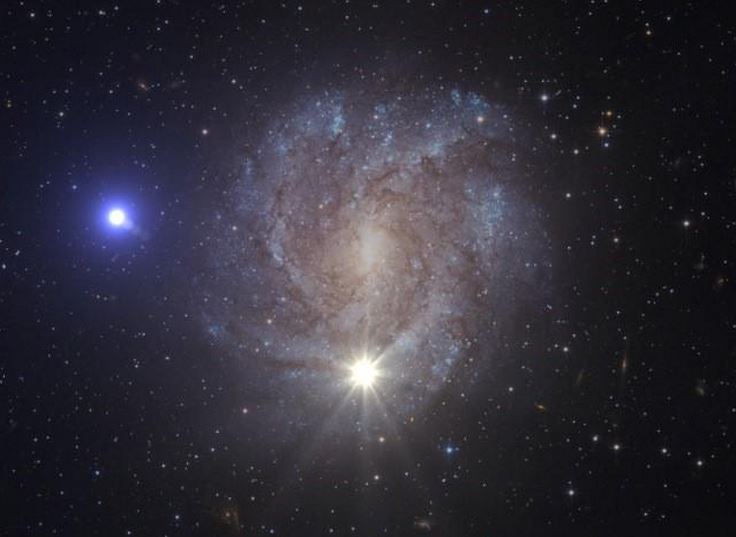A star whizzing through the Milky Way at 745 miles per second (1,200 kps) has been discovered by astronomers at Queen’s University Belfast and scientists from across the world. The white dwarf, named US708, has broken the recorded speed record for such an object in our galaxy.
A white star is a small, extremely dense star that is typically the size of the planet. It is formed when a low-mass star has exhausted all its central nuclear fuel and its outer layers. A white star may have the mass of the Sun but only be the size of the Earth.
The team of scientists from Germany, the US, the Netherlands, China, and the UK published their findings in the academic journal Science (citation below).

The ultra-fast moving unbound star discovered by astronomers at Queen’s University Belfast has broken the galactic speed record. (Credit: ESA/Hubble, NASA)
This rapidly-moving white star is not held back by gravity and will eventually leave our galaxy.
Part of a binary star
Astronomers at Queen’s believe US708 was once part of a binary star (a star system consisting of two stars), which also included a massive white dwarf star. They say the other star turned into a ‘thermonuclear supernova’ and exploded, which blasted US708 across space at high speed.
The discovery of US708 will help scientists better understand the mysterious double-star systems that eventually result in thermonuclear explosions. Thermonuclear Supernovae, also known as Type Ia Supernovae, have long been used by astronomers to calculate how far away galaxies are, a measurement that helps us determine how the Universe is expanding.
A Type Ia Supernova explosion is incredibly violent and amazingly bright, sometimes outshining entire galaxies. They are though to occur in our galaxy about once every two centuries.
Dr. Kenneth Smith and Dr. Rubina Kotak, who work at the Astrophysics Centre at Queen’s University, were part of a team of international scientists who made the ground-breaking discovery using data collected by the Pan-STARRS1 telescope on Mount Haleakala in the island of Maui, Hawaii.
They gathered and analyzed data over the past 59 years to determine the full 3-D motion of the star, and measured how rapidly it was traveling across the plane of the sky.
Dr. Kotak said:
“It is very exciting to have contributed to this important discovery which is a great example of Queen’s commitment to achieving excellence and advancing knowledge for the benefit of society. It brings us a step closer to solving the type Ia puzzle.”
Study leader, Stephan Geier, a European Southern Observatory fellow, said:
“Several types of stars have been suspected of causing the explosion of a white dwarf as supernova of type Ia. Until now, none of them could be confirmed. Now we have found a delinquent on the run bearing traces from the crime scene.”
Citation: “The fastest unbound star in our Galaxy ejected by a thermonuclear supernova,” S. Geier, F. Fürst, E. Ziegerer, T. Kupfer, U. Heber, A. Irrgang, B. Wang, Z. Liu, Z. Han, B. Sesar, D. Levitan, R. Kotak, E. Magnier, K. Smith, W. S. Burgett, K. Chambers, H. Flewelling, N. Kaiser, R. Wainscoat, and C. Waters. Science. Published on 6th March, 2015. DOI:10.1126/science.1259063.
Video – Type Ia Supernovae

